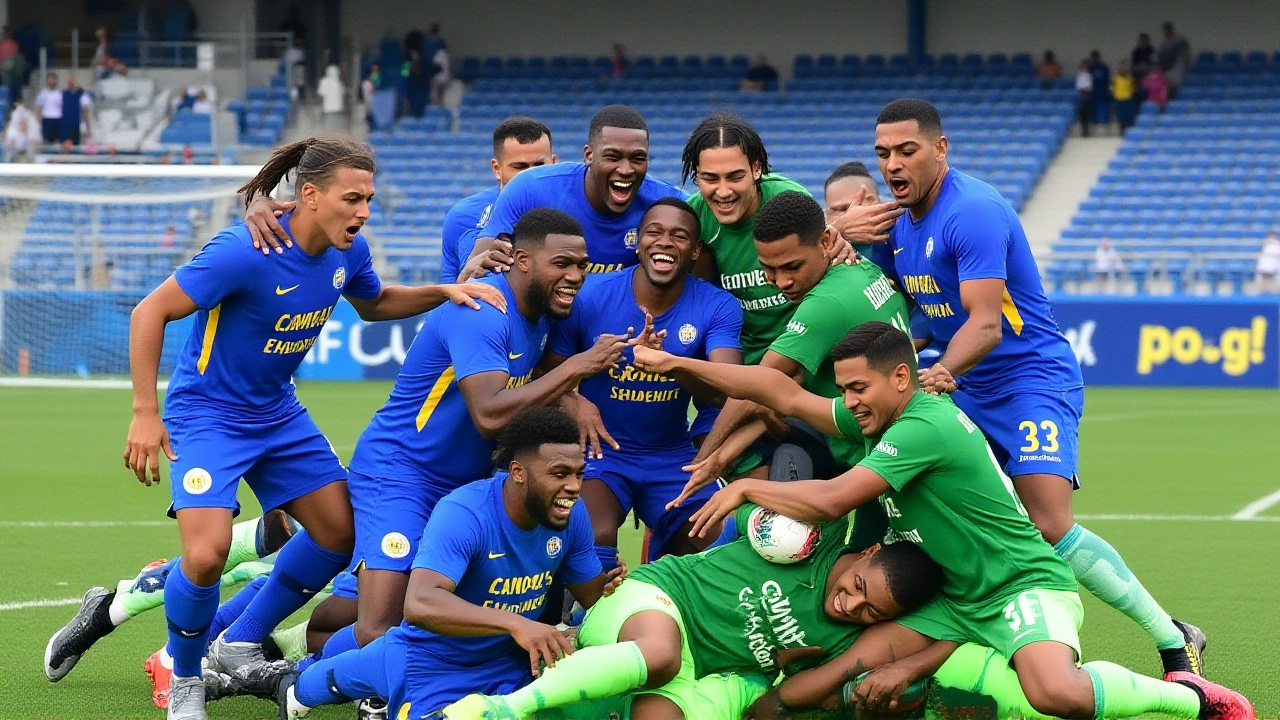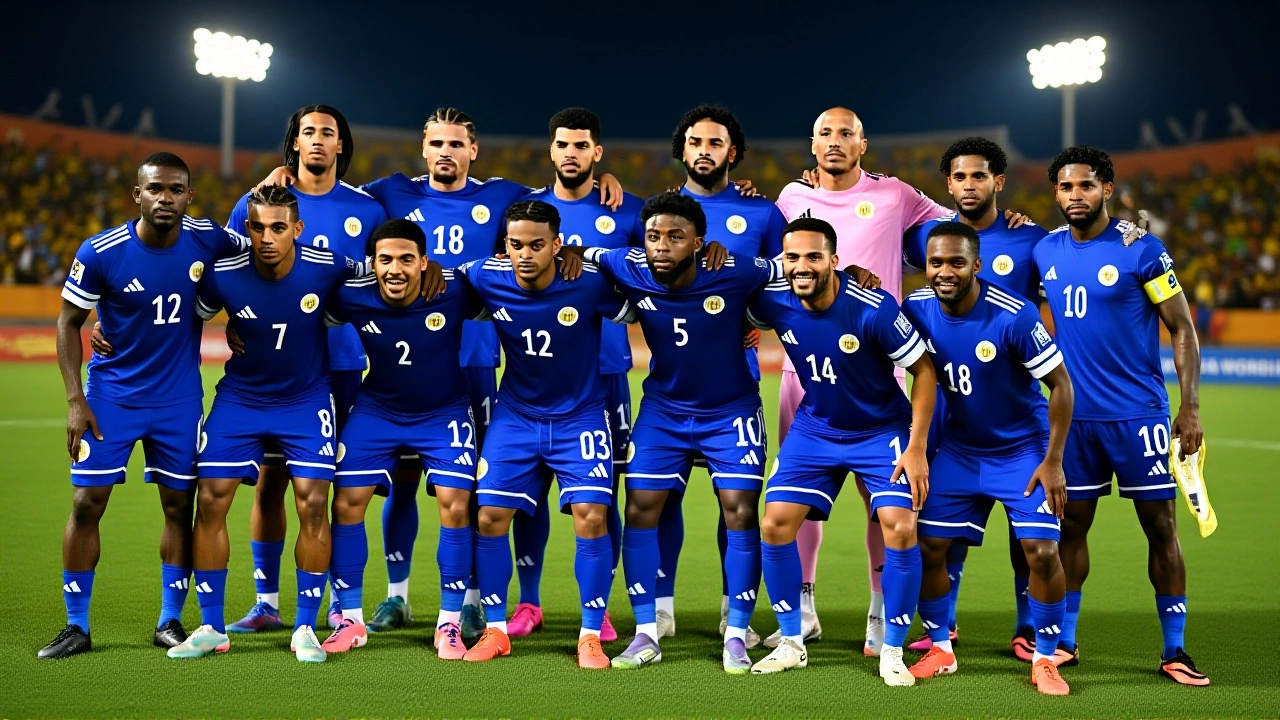On November 19, 2025, at 00:01:07 UTC, the Curaçao national football team stunned the football world by securing a 1-1 draw against Jamaica in the final match of CONCACAF’s third-round qualifiers — a result that sent them to the 2026 FIFA World CupMexico as the smallest nation ever to qualify. With a population of just 156,000, this tiny Caribbean island has shattered every expectation, proving that heart, grit, and unity can outmatch sheer size. The victory wasn’t won with a goal, but with resilience — a draw was all they needed, and they held on. Fans erupted. Players wept. And for the first time in history, a nation smaller than many U.S. towns will compete on football’s grandest stage.
A Record Broken by the Unlikeliest of Teams
Curaçao’s qualification isn’t just surprising — it’s unprecedented. Before this, the smallest nation to ever reach the World Cup was Trinidad and Tobago (population ~1.4 million) in 2006. Even tiny Iceland (340,000) in 2018 was nearly double Curaçao’s size. The island, located just 65 kilometers off Venezuela’s coast, is a constituent country of the Kingdom of the Netherlands. Its football federation, the Federashon Futbòl Kòrsou (FFK), based in Willemstad, has long operated on shoestring budgets. No professional league. No state-of-the-art academies. Just passion, local talent, and a fierce will to compete.What made this possible? A tactical shift. Under coach Wesley Sneijder (former Netherlands star and now national team mentor), Curaçao adopted a disciplined, counterattacking style that neutralized stronger opponents. They drew 1-1 with Honduras in their last qualifier, then held Jamaica — a team with over 2.8 million people and a far more developed football infrastructure — to a stalemate in a match that ended with the islanders clinging to a 1-1 scoreline. The goal came from 19-year-old striker Sheldon Bateau, who netted his first international goal in the 23rd minute. Jamaica equalized late, but Curaçao’s defense, anchored by veteran center-back Stefan de Vrij (who plays for PSV Eindhoven), held firm.
The Celebration That Went Viral
At the final whistle, the footage from the pitch told the whole story. Players collapsed to their knees. Coaches hugged strangers in the stands. One unnamed player, captured by AFP News Agency in raw, unedited video, shouted: “I’m so proud of you guys and thank you.” Another added: “We’re super proud. You guys did great. I didn’t expect this because I thought Jamaica was a strong team, but we did it. Finally, we did it.” And then, the line that will echo for decades: “We will show everyone that we are small, but we are big at heart.”That moment, timestamped 00:01:07 UTC on November 19, 2025, became a global sensation. TikTok clips of the celebration racked up 89 million views in 48 hours. In Willemstad, streets emptied as people poured out of homes, dancing to soca music. A local bar owner, 72-year-old Marlon van der Meer, told reporters: “I’ve watched Curaçao lose more than I’ve watched them win. But today? Today, we didn’t just win. We proved we belong.”

Why This Matters Beyond the Pitch
Curaçao’s achievement isn’t just about football — it’s about identity. The island gained autonomy from the Netherlands Antilles in 2010, and since then, its national identity has been in flux. Sports have become a rare source of unity. The Federashon Futbòl Kòrsou has no full-time staff. Their training camp is a rented field with two goals and a broken scoreboard. Yet, they’ve outlasted nations with billion-dollar sports budgets.Experts say this signals a turning point for small nations in CONCACAF. “It used to be assumed that if you didn’t have a population over 500,000, you couldn’t compete,” said Dr. Elena Ruiz, a sports sociologist at the University of Miami. “Curaçao proves that’s a myth. When you invest in youth development, even with limited resources, and build a culture of belief — you can do the impossible.”
The other debutants in 2026 — Cape Verde (597,000), Jordan (11.1 million), and Uzbekistan (36.1 million) — are all significantly larger. Curaçao stands alone. It’s not just the smallest. It’s the most improbable.
What Comes Next?
The 2026 FIFA World CupMexico kicks off on June 11, 2026, in Mexico City, with the final on July 19 at MetLife Stadium in East Rutherford, New Jersey. Curaçao will be placed in a group likely to include powerhouse teams like Brazil, Germany, or Spain. They won’t be favorites. But they won’t be underestimated either.The FFK has already begun planning. They’ve secured a training base in Florida for early 2026 and are negotiating friendly matches with teams in the Netherlands and the U.S. to prepare. A crowdfunding campaign, “Small Nation, Big Heart,” has raised over $2.3 million from diaspora communities in the Netherlands, the U.S., and Latin America. One donor wrote: “My grandfather left Curaçao in 1958. Today, I’m sending my son to watch him play in the World Cup. That’s legacy.”

A Legacy Written in Sweat, Not Statistics
Curaçao’s journey wasn’t about money. It wasn’t about star power. It was about belief — in themselves, in each other, and in the idea that greatness doesn’t require size. They didn’t need to score more goals than anyone else. They just needed to believe they belonged.And now, the world will watch.
Frequently Asked Questions
How did Curaçao qualify for the 2026 World Cup with such a small population?
Curaçao qualified by finishing in the top four of CONCACAF’s third-round group stage, which included Jamaica, Honduras, and Panama. Their 1-1 draw with Jamaica on November 19, 2025, gave them enough points to advance. Their success came from disciplined defense, tactical discipline under coach Wesley Sneijder, and an intense focus on youth development through local academies, despite having no professional league.
Who are the other debutants in the 2026 World Cup?
Alongside Curaçao, the other first-time qualifiers for the 2026 World Cup are Cape Verde (population ~597,000), Jordan (11.1 million), and Uzbekistan (36.1 million). While all are significant achievements, Curaçao’s population of 156,000 makes it the smallest nation ever to reach the tournament — dwarfing even Iceland’s 2018 run.
What’s the history of Curaçao’s football team?
Curaçao’s national team previously competed as part of the Netherlands Antilles until 2010. Their best prior achievement was reaching the 2017 CONCACAF Gold Cup quarterfinals. They’ve never won a World Cup qualifier before 2025. The Federashon Futbòl Kòrsou (FFK) has operated with minimal funding, relying on diaspora support and volunteer coaches to sustain the program.
Where will Curaçao play their World Cup matches?
The 2026 World Cup will be hosted across 16 venues in Mexico, the United States, and Canada. Curaçao’s group stage matches will be held in one of the U.S. cities — likely Atlanta, Miami, or Kansas City — based on FIFA’s regional balancing. Their opening match is expected to be in early June 2026, with full scheduling to be announced in December 2025.
How are Curaçao’s players funded and trained?
Most Curaçao players are semi-professionals who play in lower-tier Dutch leagues or local amateur clubs. The FFK provides stipends for training camps and travel. Many players work part-time jobs — teachers, mechanics, retail staff — and train after work. Their national team camp is held in a rented field in Willemstad with no permanent stadium. The $2.3 million raised through crowdfunding will help fund a pre-tournament training base in Florida.
What impact will this have on Caribbean football?
Curaçao’s success is already inspiring smaller Caribbean nations like Suriname, Saint Lucia, and the British Virgin Islands to invest more in youth programs. FIFA has signaled it may create a new development fund for nations under 200,000 population. The message is clear: if Curaçao can do it, so can others. This could mark the start of a new era in CONCACAF, where heart outweighs population.



